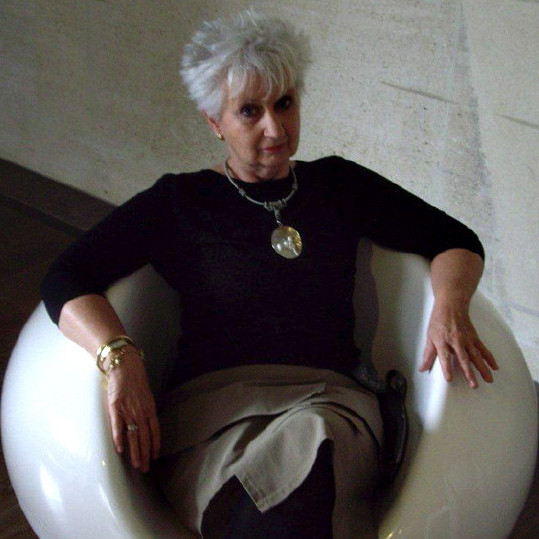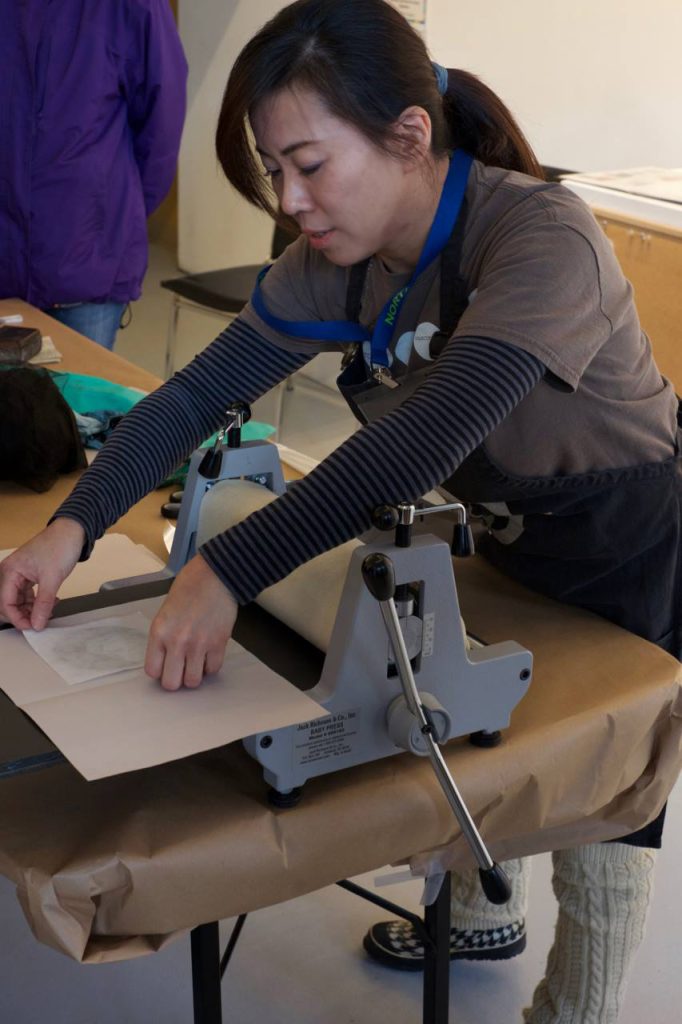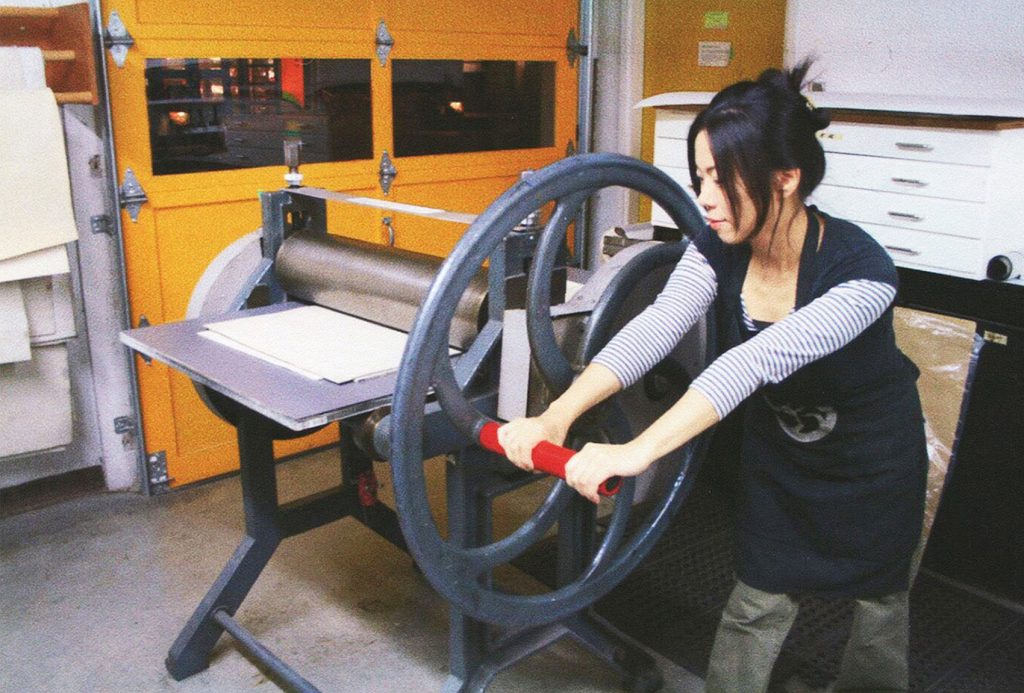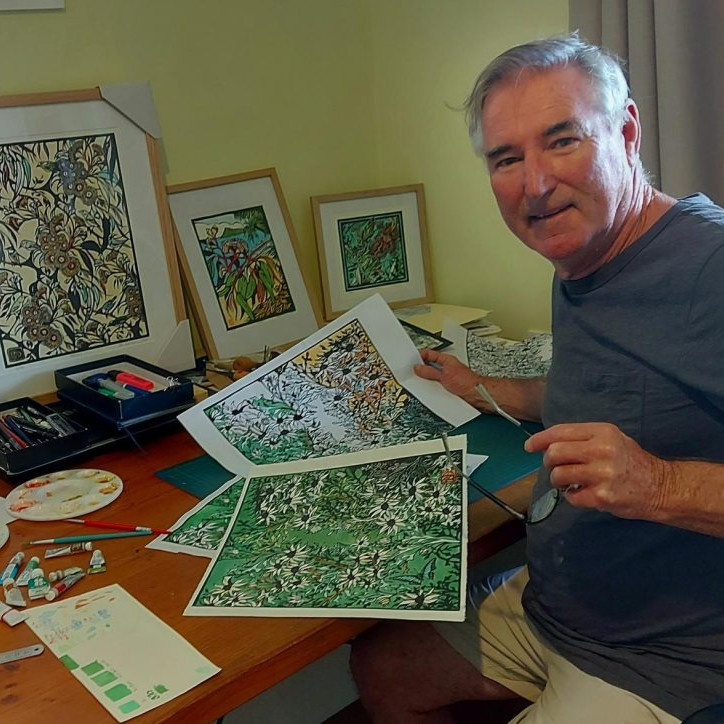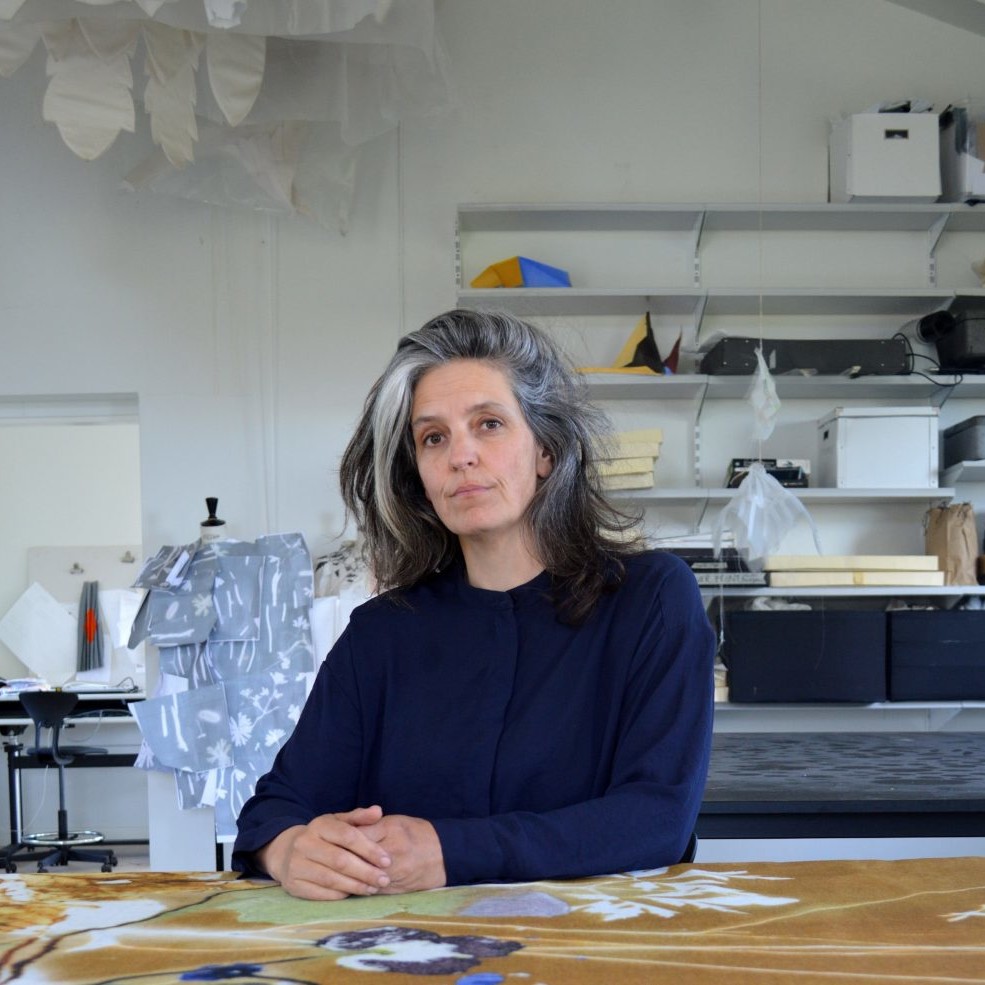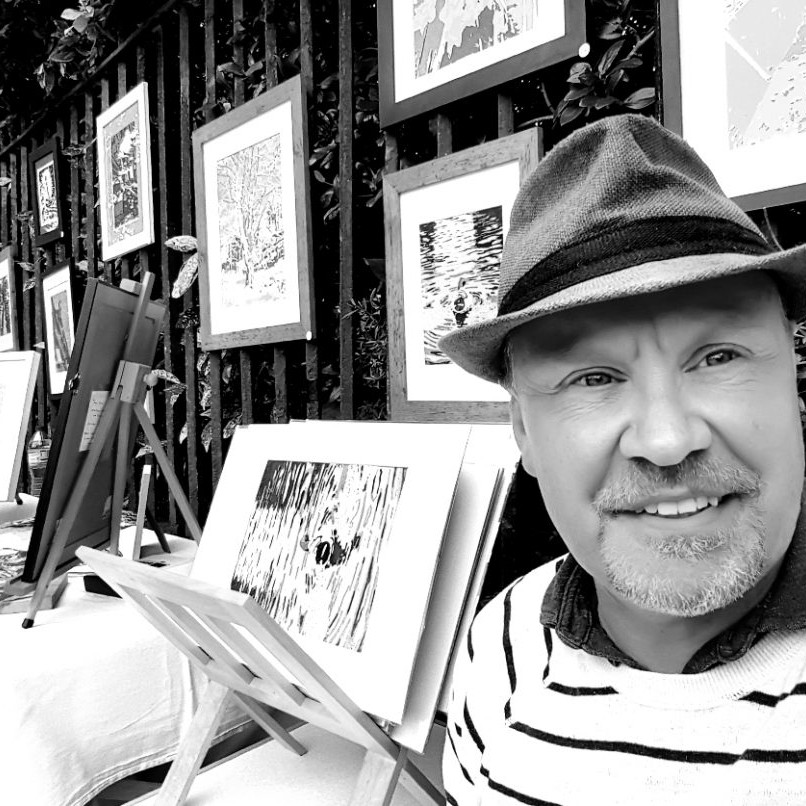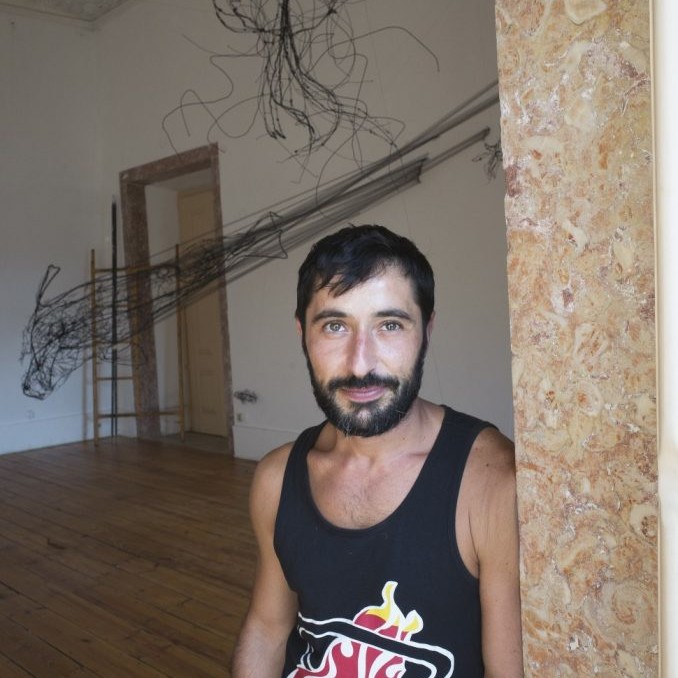Mariko Ando Printmaker / Illustrator
Can you explain the way the mixing of two cultures, Japanese and Canadian has affected your current work?
I was influenced by European culture from a young age and was particularly drawn to Victorian style illustration. I loved the British Monty Python inserts, for example, which were collages of these. I feel that the beauty of Japanese art is its serenity. I became particularly aware of this when I came to Canada. Perhaps the composition and spatial expression in my art works are a fusion of the Japanese part of me and European materials.
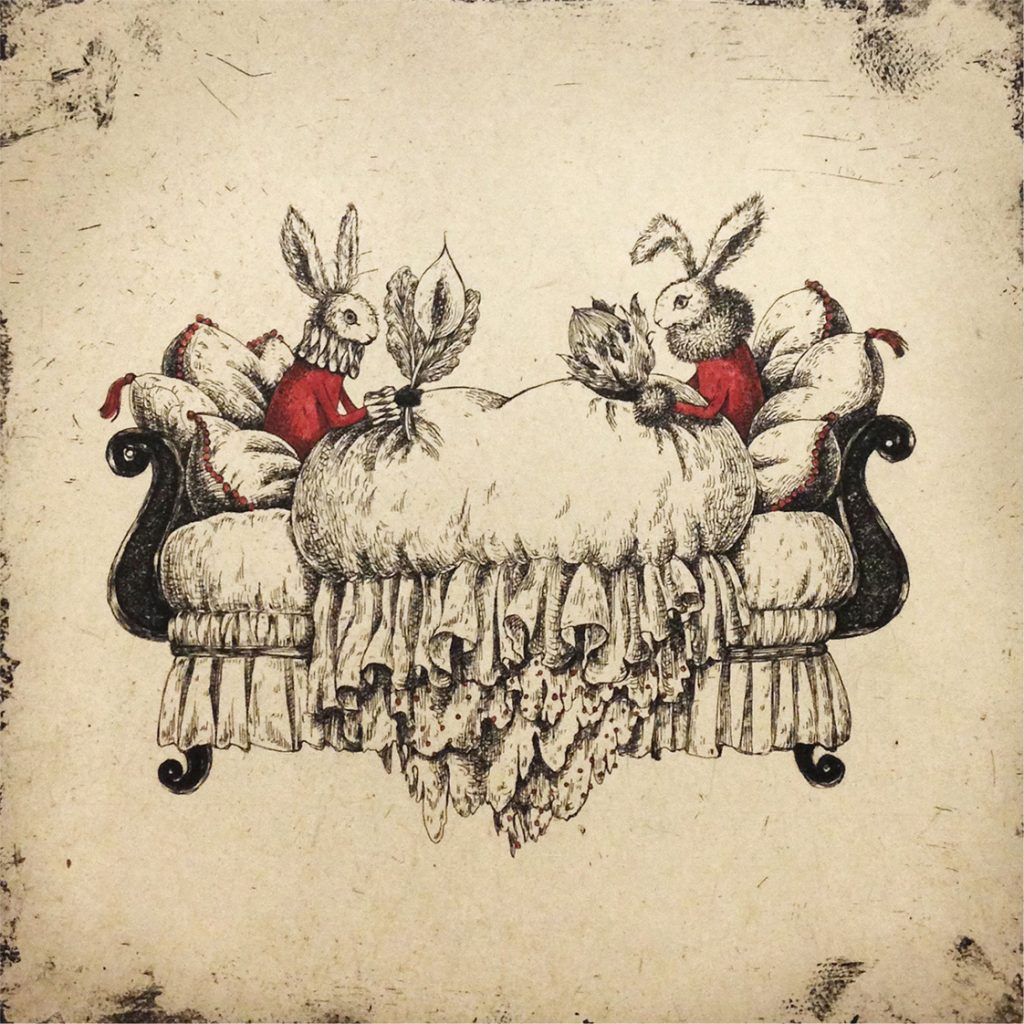 Everlasting Love
Everlasting Love
Explain the term Intaglio Printmaking?
It refers to all intaglio techniques of printing and printmaking. Conversely, the relief printing technique is called relief printing. A metal plate is physically engraved with an engraving knife or steel brush, or corroded with an acid solution to create a concave area, ink is applied to the entire plate, the ink on the surface (convex area) is wiped off with a cloth or newsprint paper or hands and then transferred to paper by applying pressure in a press machine.
What led you to working “Bunny”?
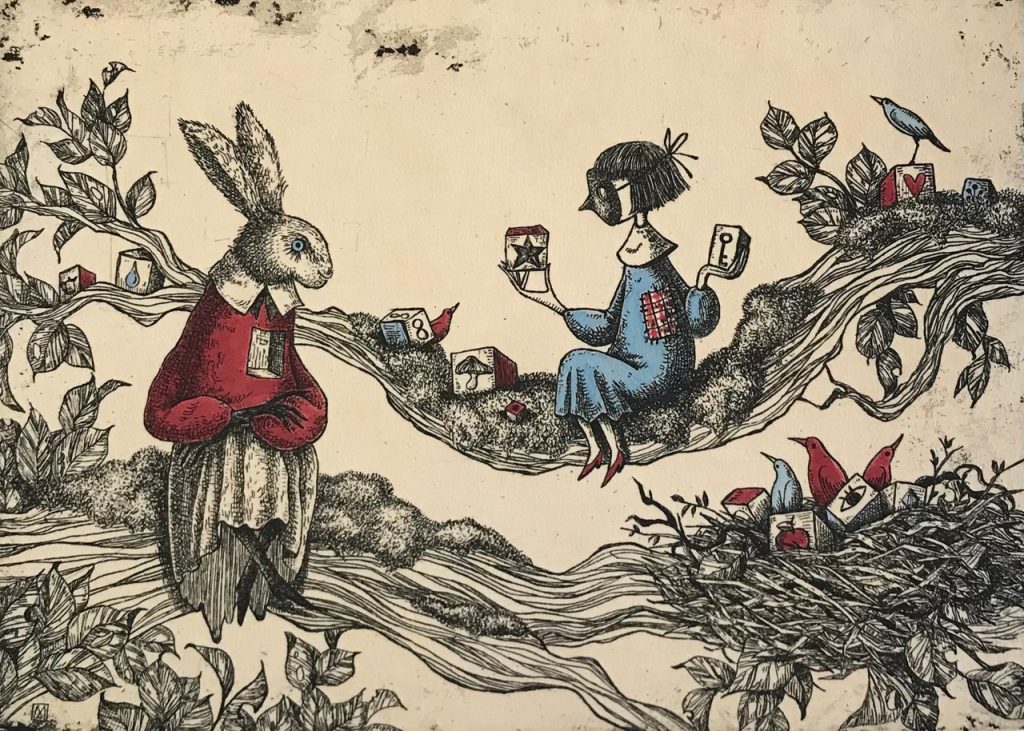
Lost and Found
I don’t remember if it was a dream or what, but it must have been a daydream. A rabbit appeared. She / He didn’t say anything.
I started drawing the rabbit in my painting, and now my hand moves on its own and draws the rabbit. The rabbits I draw are inorganic and somewhat frightened, but they have a little courage. I am sure they share the childhood memories that we all have in our hearts.
The bunnies lead the way in the world I want to express.
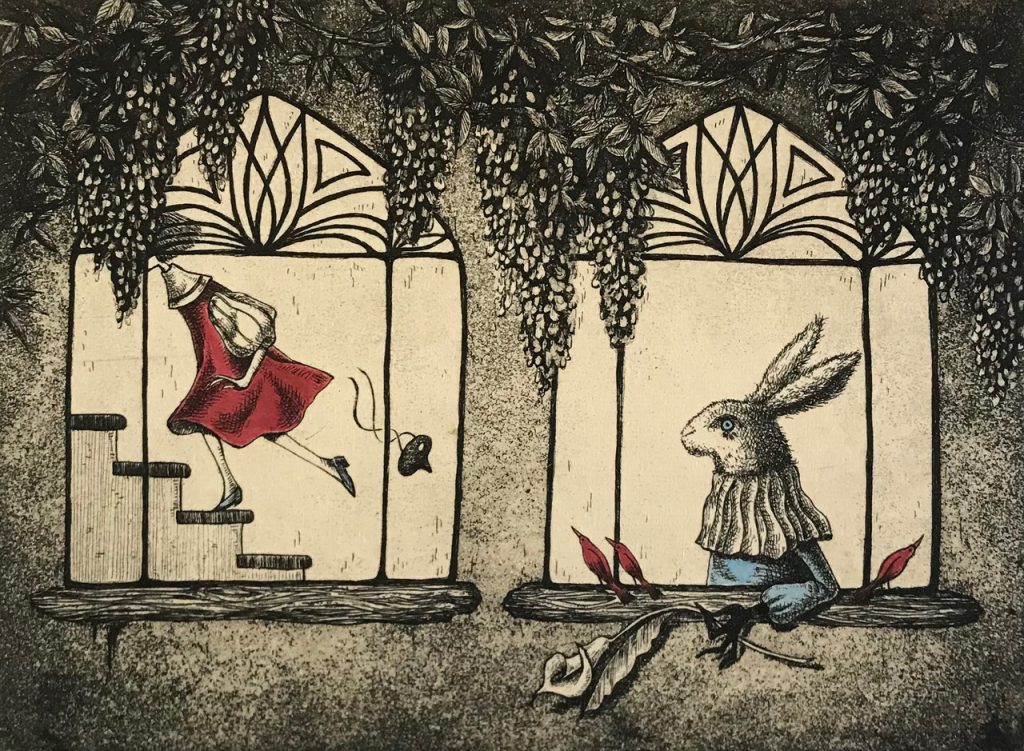 Night of June
Night of June
Your “Bunny” Series has been developed into Limited Edition Prints, discuss.
They are mostly, about 20 editions. Small are 5 to 10 inches or less. Large ones are about 14 inches. Sometimes on red paper is used, but usually hand-coloured with acrylic paints or colour inks after the ink has dried.
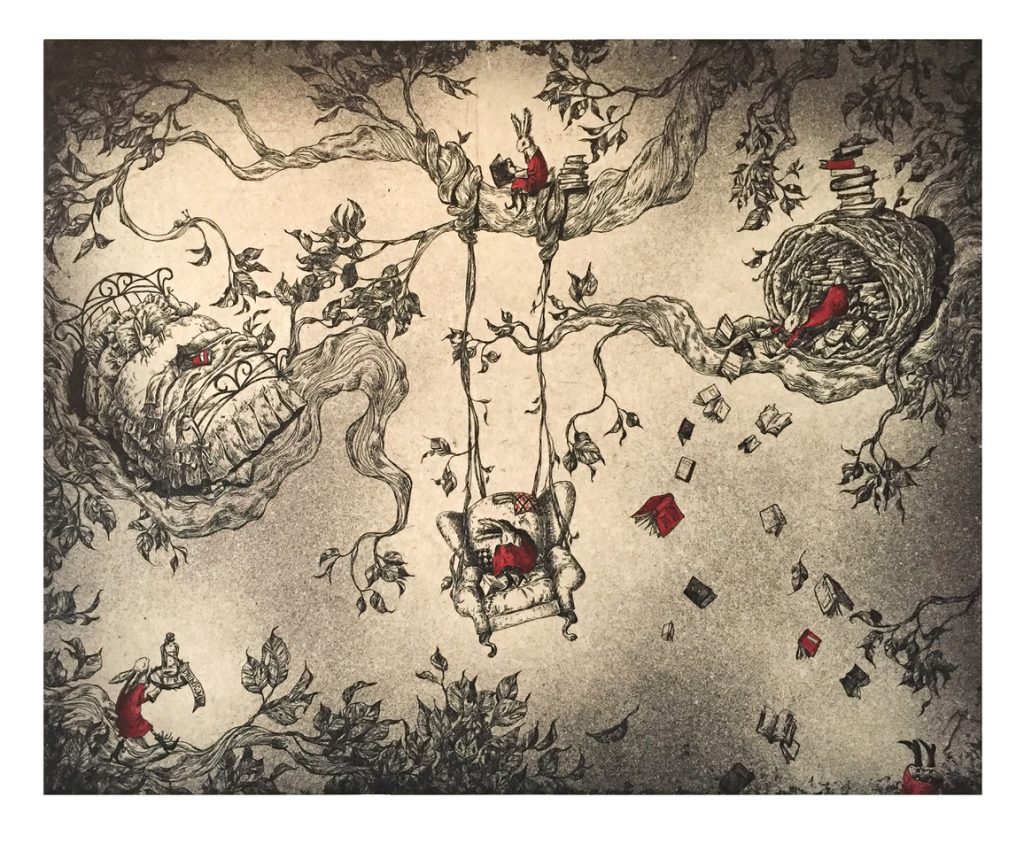
Gracious Insomnia
Show, how you have made your animals take on human personalities.
How? That is an interesting question. I have never thought about it. All living things have their own language and I always speak to them naturally. It’s a natural thing to me?
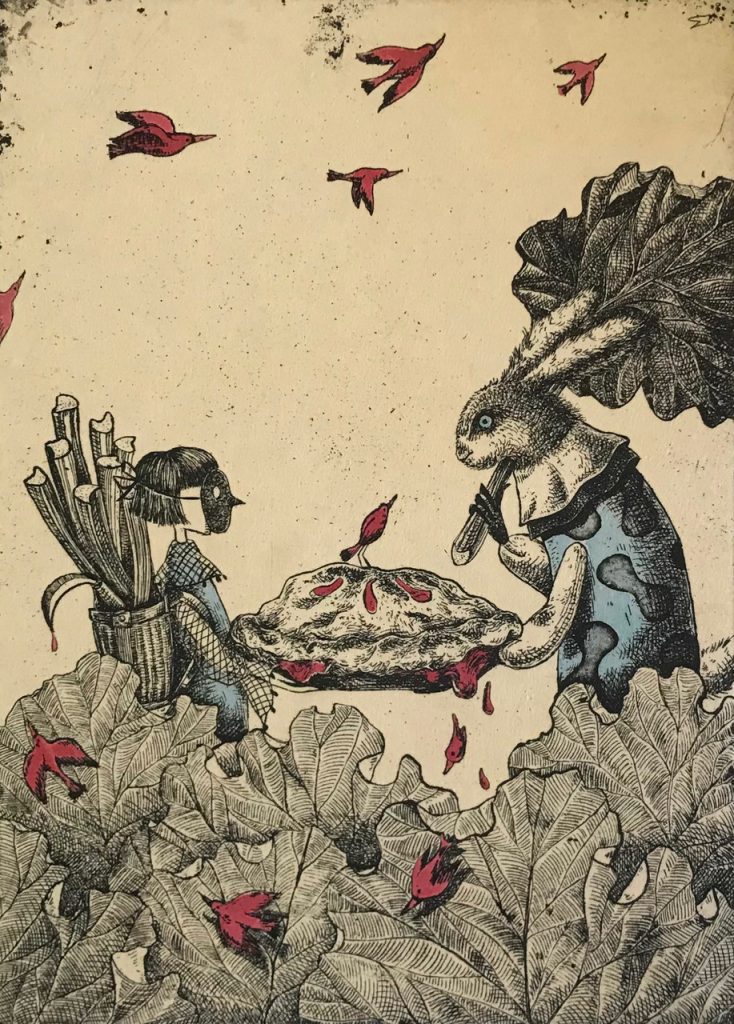 Her Rhubarb Pie
Her Rhubarb Pie
How has your work come to be chosen for several Children’s book illustrations?
For me, illustrating picture books has always been a dream. When I came to Canada, I created a portfolio, researched publishers and sent it off. It didn’t lead to work straight away, but I think it was the result of a long, slow process of building good relationships.
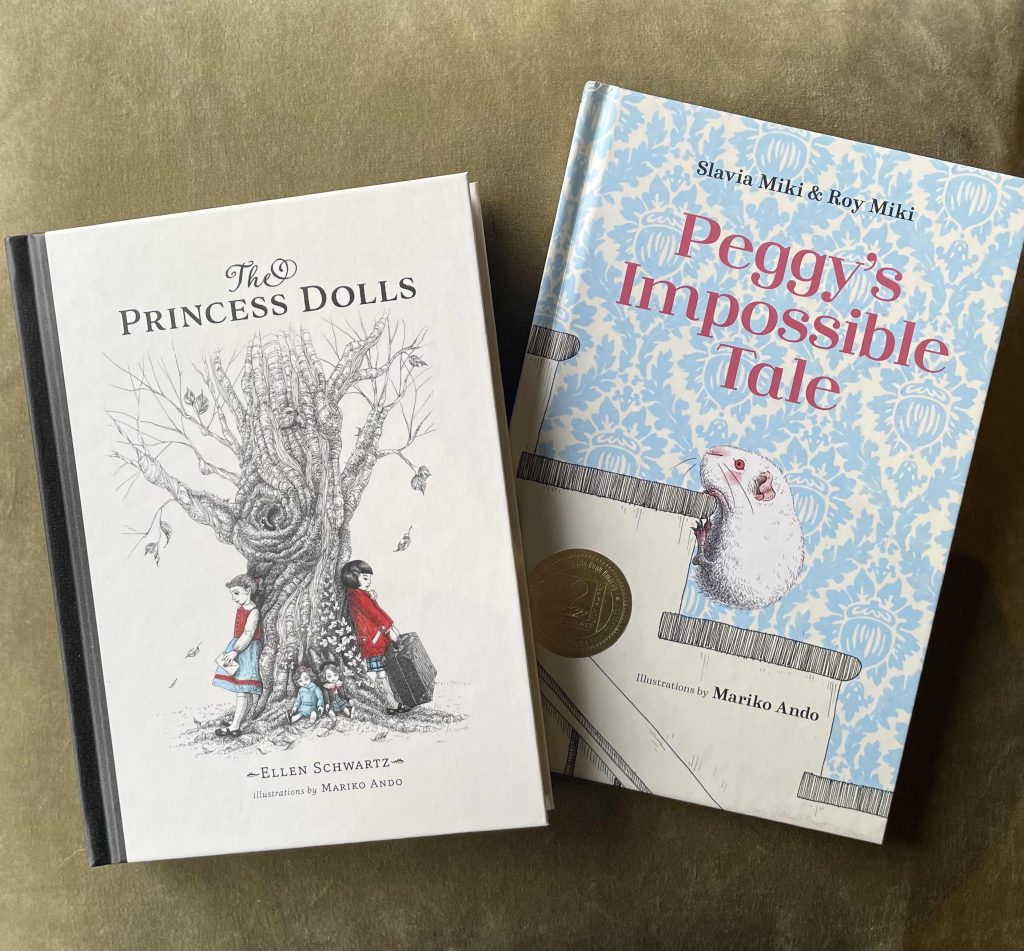
How important is the relationship between an author and the illustrator?
The author and illustrator do not usually meet or talk until the picture book is finished.
It is always communicated through the publisher. This is something of a rule in the traditional publishing world. Of course, it is up to the publisher and the author. When I meet the author after publication, it is a very magical and emotional hug. It is a wonderful moment. Producing a picture book is really hard work. If you can’t even get on with the marketing properly, it will end up being wasted on no-one’s eyes. That’s why I try to refuse to work on picture books unless it is through a professional publisher. (Book info: ‘Peggy’s Impossible Tale’ by Slavia & Roy Miki :Won Award: Chocolate Lilly Book Awards 2023 , ‘The Princess Dolls’ by Ellen Schwartz :Won Award: Western Jewish Vine Book Awards 2019 , both published by Tradewind Books).
Are the connections to Alice in Wonderland, intentional?
People often tell me that. I am not particularly conscious of it. But I respect very much John Tenniel who the original Alice in Wonderland illustrator. I do have his prints and vintage books! Those are my treasures.
Can you discuss several of the characters in the work “Silent Spectators”?
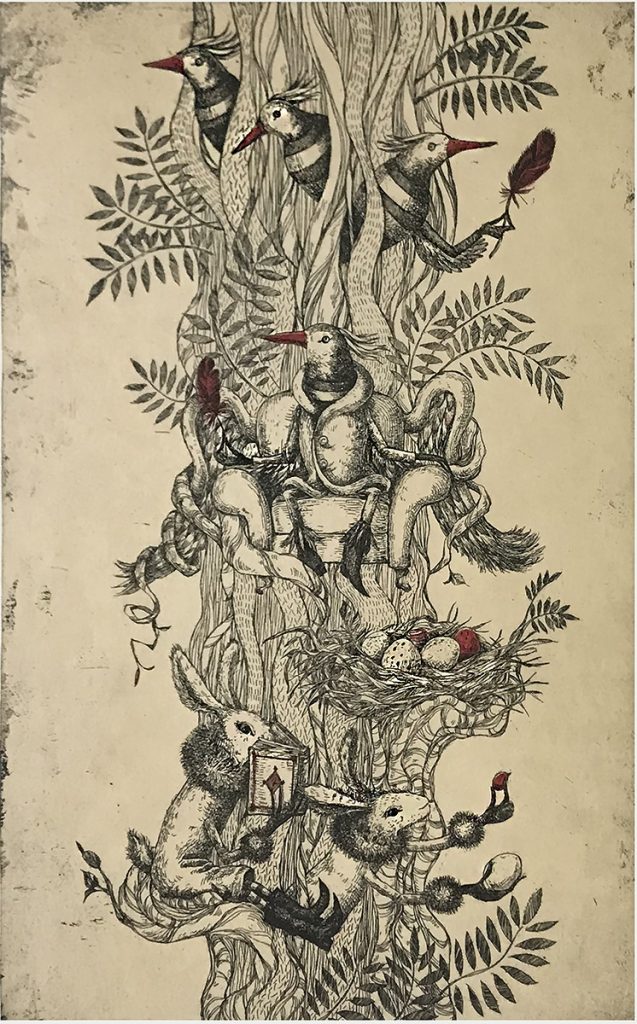 Silent Spectators
Silent Spectators
What are the prince and his cronies up to in their bird kingdom in the deep forest? The three rabbits don’t seem to mind them and seem to be enjoying themselves, but they know something is going on.
How has your “Alphabet” Series been sold, individually, making up a word or name, or as a set of 24?
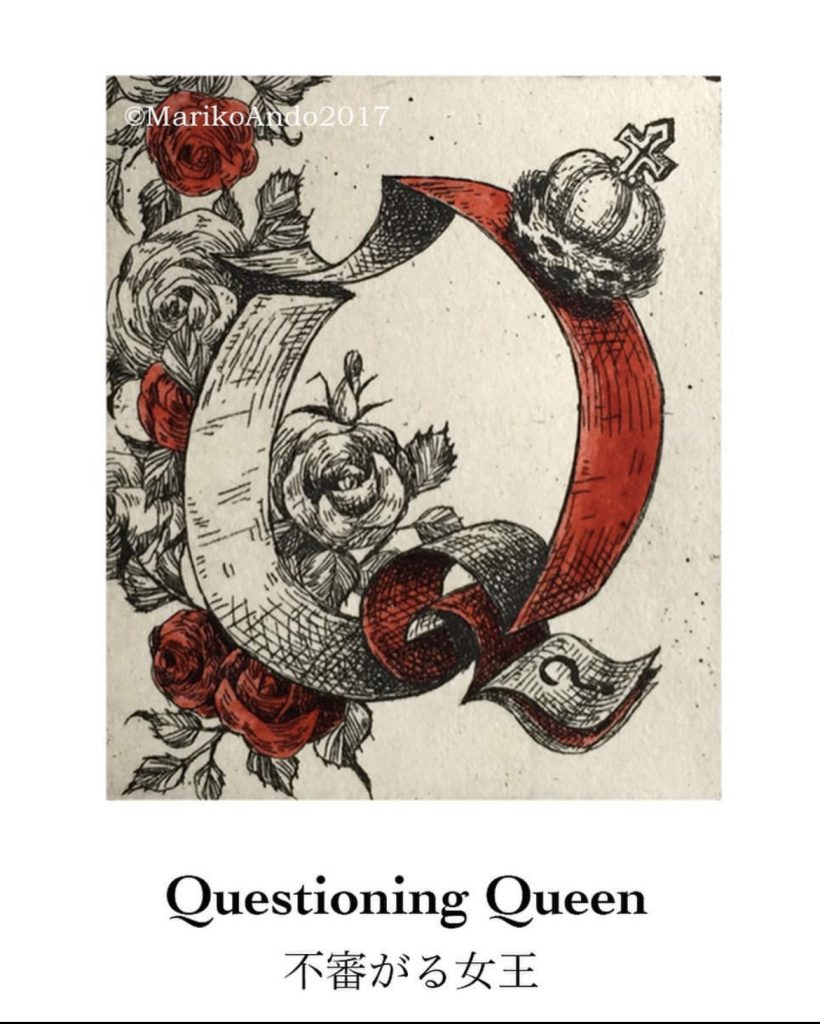
It’s still available a set with A~Z, 26 sheets, together with front and back covers. They are also available individually. Unfortunately, the book is not yet bound, but I would like to make it someday.
‘Alphabet Series’ (2017) has always been something I wanted to make. My father died in 2016 and I made it for him and my mother. I don’t know if it’s all about them, but it was my parents’ who created the creature I am. Isn’t the A to Z in me their creation at the same time?
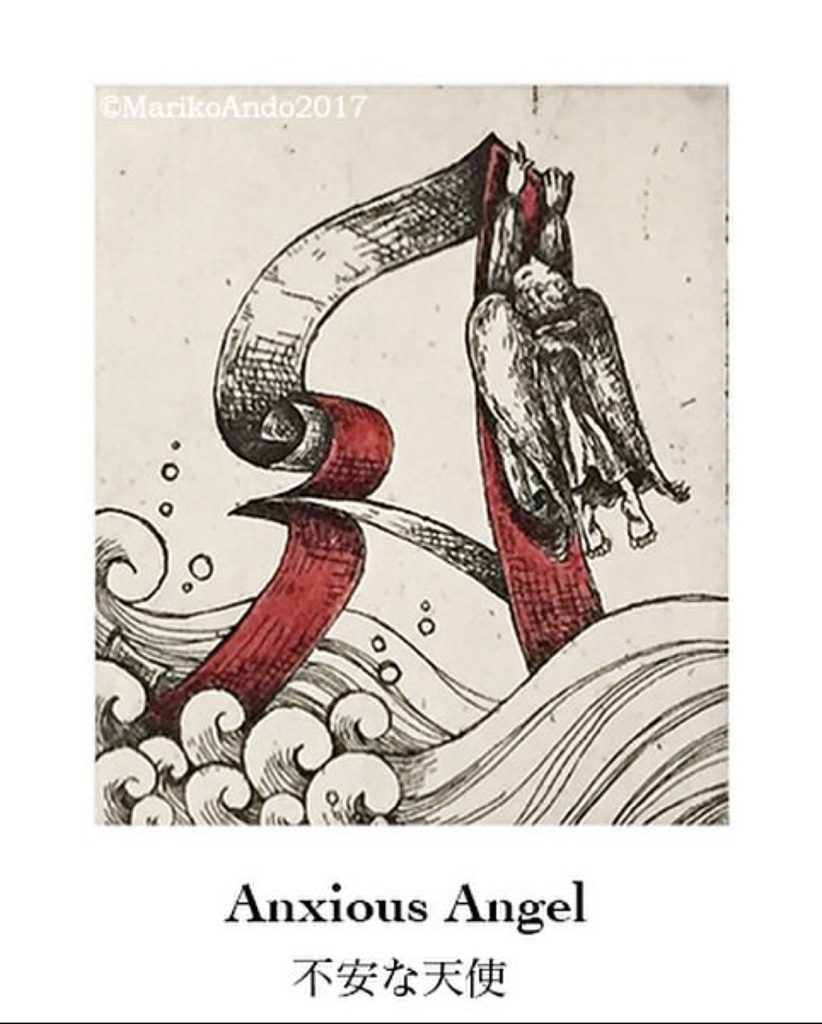
‘Alphabet Series’ combines two words with the same alphabet at the beginning and creates an image based on it. I made them while staring at the dictionary. It was difficult to come up with them from my limited English vocabulary.
I would ask my husband, ‘Isn’t this combination strange?’ and I checked each one, and his answer was always, ‘It’s strange, but it’s funny and it’s you.’
Your exhibition “Minding Rambling Hares” in Vancouver, discuss, the importance of being a printmaker of this standard. The attention to detail.
I think especially in recent years. A series of terrible conflicts and disasters that make us want to prevent hearing anymore. Even if not, people have small sorrows and sufferings in their daily lives. It doesn’t matter how big or small it is. I think it would be wonderful if people could forget everything for a moment and smile when they pass by my artwork in such circumstances.
Why etching printmaking?
The lines carved by the chemical corrosion of the copper plate have an appeal that is completely different from that of direct drawing with other materials. Sometimes the result is unexpected, which is also interesting. Among printmakers, this is called a happy accident.
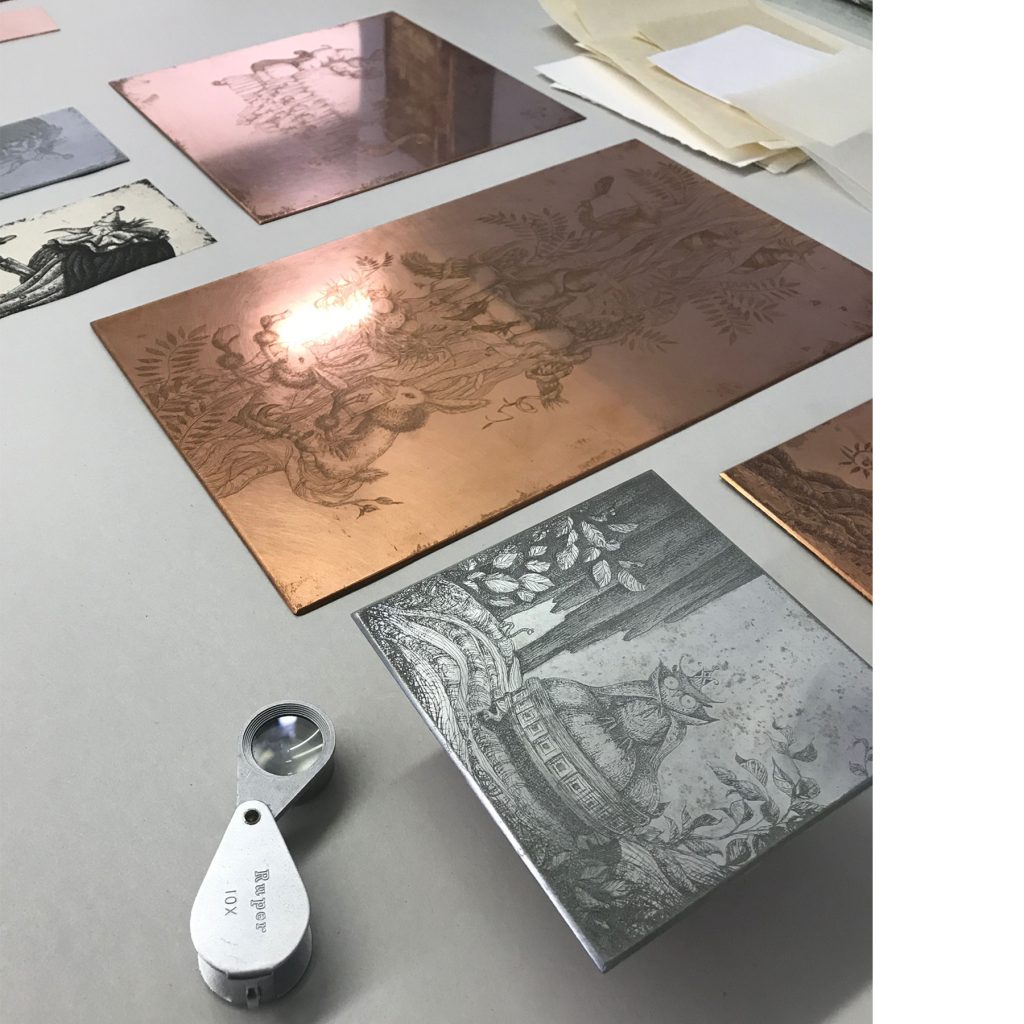 I’m particularly interested in the ‘unearthed in the ground’ effect. Etching is very suitable for that. The advantage of being able to reproduce. It’s not a one-off, where if it sells, it’s goodbye. I can keep at least one copy. I think there are probably a lot of artists who feel the same way, but the work is like my own child.
I’m particularly interested in the ‘unearthed in the ground’ effect. Etching is very suitable for that. The advantage of being able to reproduce. It’s not a one-off, where if it sells, it’s goodbye. I can keep at least one copy. I think there are probably a lot of artists who feel the same way, but the work is like my own child.
Printing technology is evolving at a dizzying pace these days.
I am a somewhat cynical person, who uses ancient printing techniques in contrast to the dizzying progress of printing technology today. I think it might be my twisted nature that makes me do it. However, the beauty of a sheet of paper that is printed by hand, one by one, taking time to turn a heavy press machine by hand is precious.
The smell of the ink on the paper, and the rise and fall of the ink, are something you should feel up close if you have the chance.
The pictures and lines on the copper plate engraved by etching, The plate itself is lovely.
Take two prints and comment on them.
Print 1
This is an intaglio printing. My usual style.
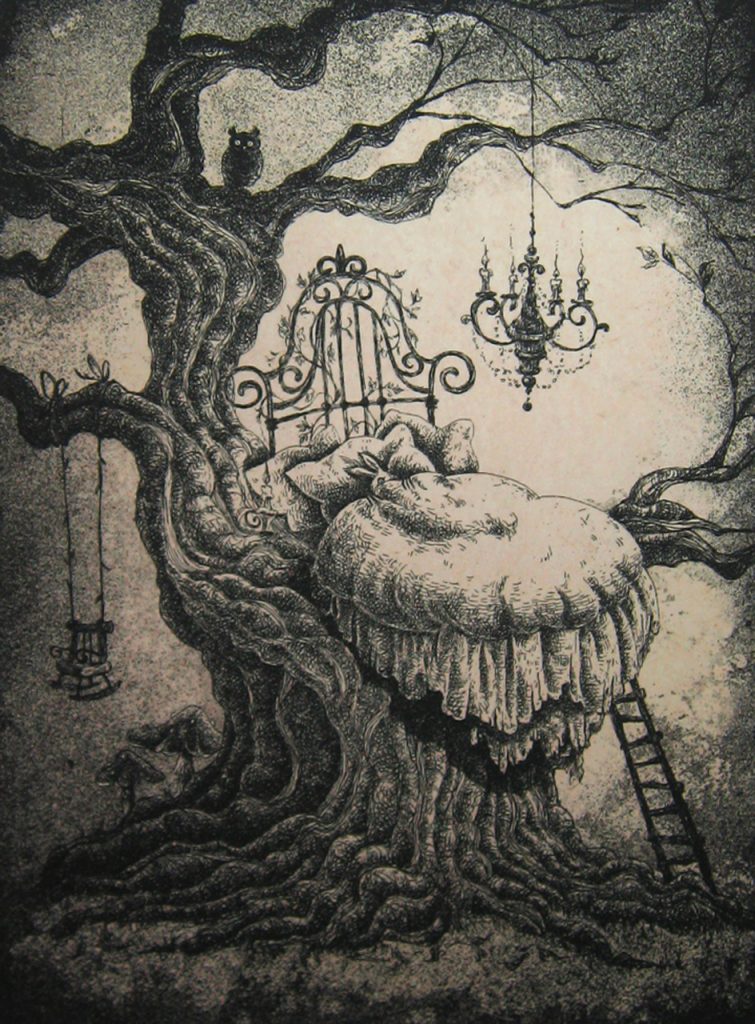 Day Dreamer
Day Dreamer
Print 2
This is a woodcut print. This is a relief printing. A chisel is used to dig into the wood board where you want to make it white. This is the complete opposite of everything, especially as it is a large 8’ x 4’.
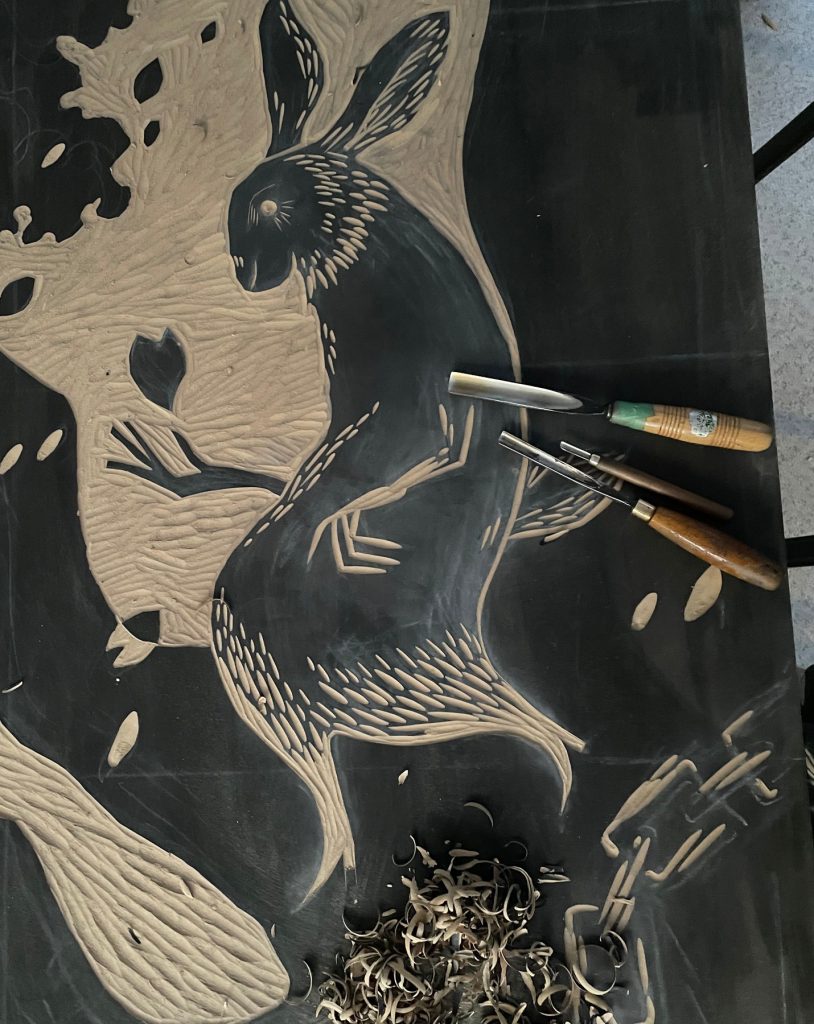 Big print, Print Block
Big print, Print Block
This ‘BIG PRINT project’ is by the Vancouver-based Creative Cultural Collaborations Society.
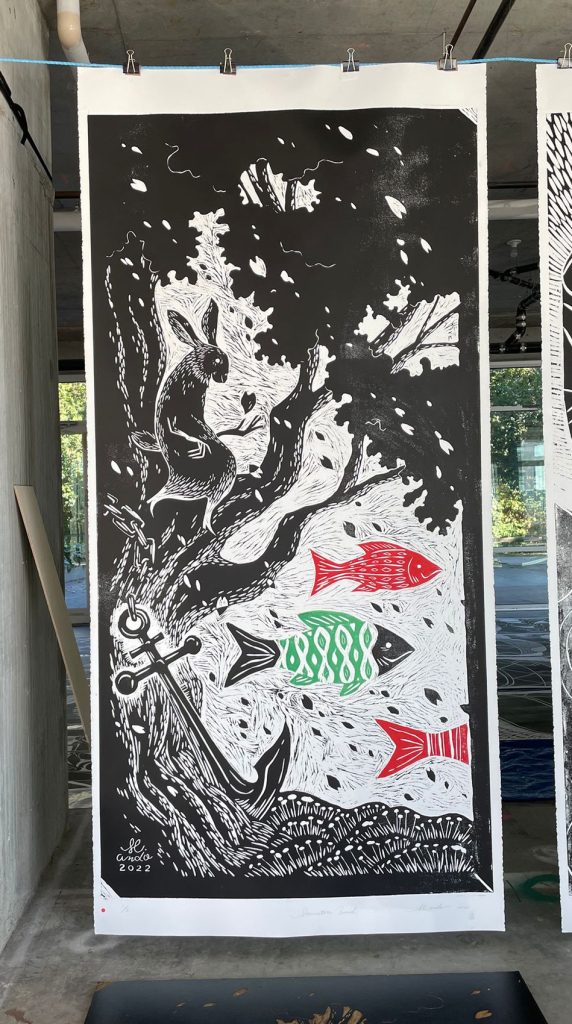 Big print photo
Big print photo
It was a unique project that was printed on a steam roller car.
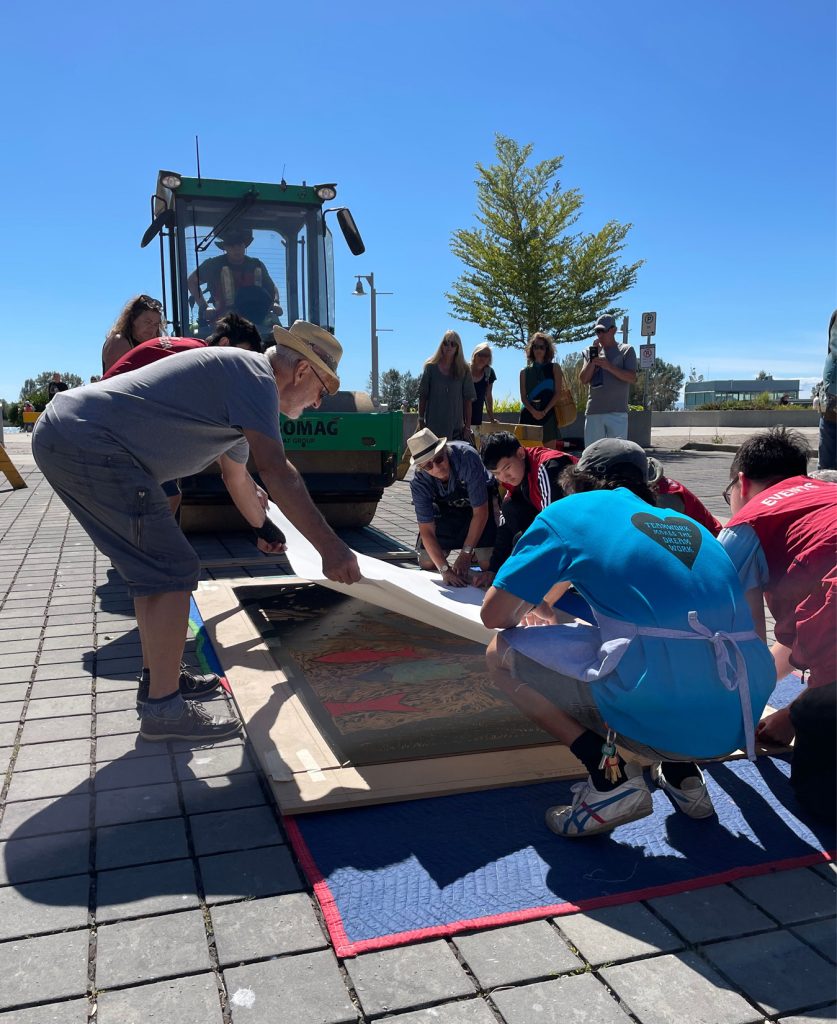
You have recently returned to Japan for an exhibition, discuss the process this took to achieve an exhibition in another country.
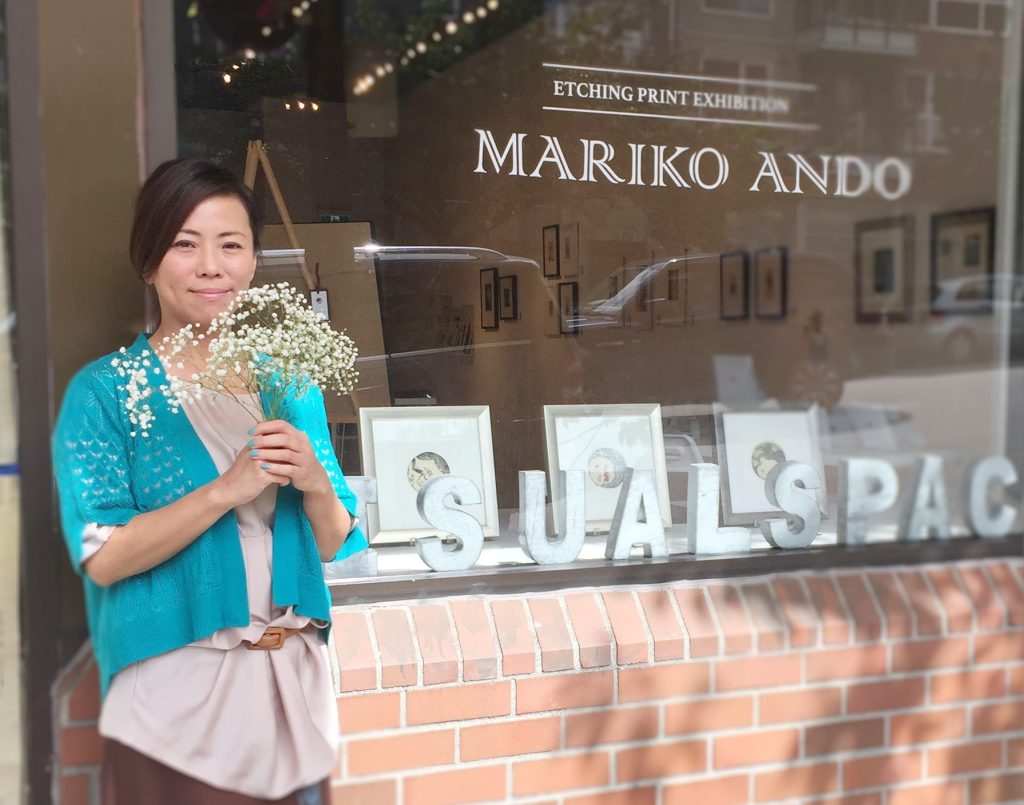
Yes. I had a solo exhibition in Osaka, Japan, in October. It was a great opportunity to meet old friends and new customers. It was very meaningful and nostalgic to have a solo exhibition in Osaka, which was where I worked when I was still a young artist.
In Japan, I can connect with people through acquaintances, and the solo exhibitions develop based on encounters and old connections. For example, the gallery owner Yukiko Onley Visualspace Gallery Vancouver introduced me to the Toga gallery Okayama, Japan. I feel very lucky. At the same time, I get to see my family and friends.
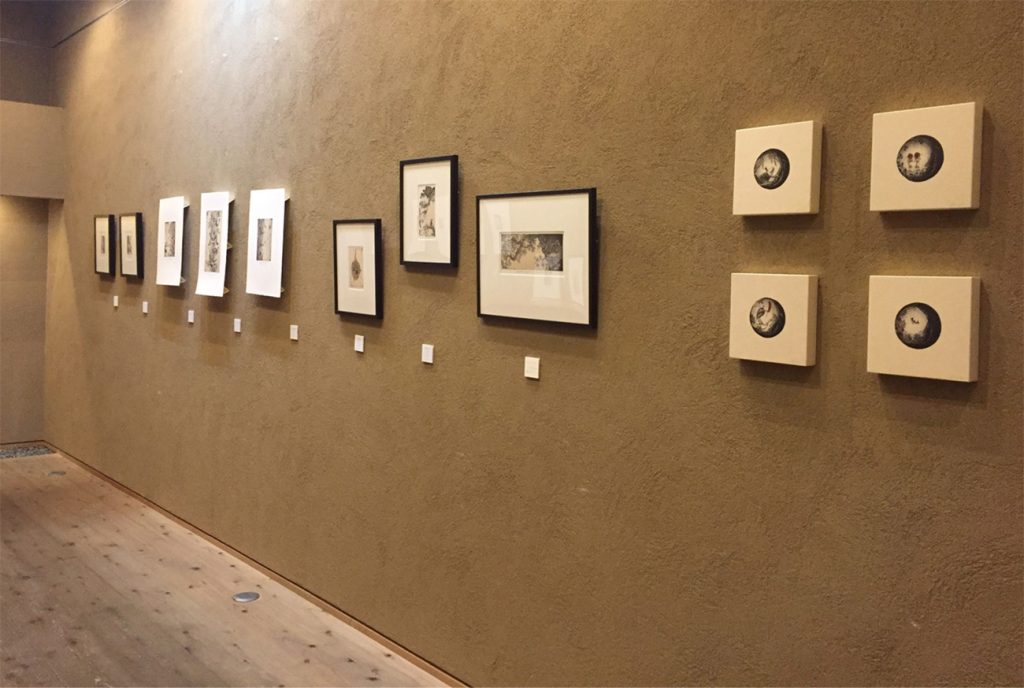 Japanese Gallery
Japanese Gallery
This November, I am currently holding a solo exhibition at the Liss Gallery in Toronto. I just recently returned from a trip to the opening reception. It’s not overseas, but Toronto is far away from Vancouver, three hours time difference, and it’s a big city.
I attended the Toronto Art Expo 10 years ago because I wanted to expand my base. I was nervous and anxious about attending a big show by myself, without any acquaintances and with my English even worse than it is now. I met the owner of the gallery there.
Originally, I would like to approach more places, but I’m taking my time and seeing how my fitness is.
Do you take commissions?
Yes, if it’s fits on my art work style, timing and cost.
What are you currently work on?
I’m working on the illustration for the Cookie Package of a Japanese Hotel. I’ll be back to work for printmaking and oil painting.
Discuss the relationship you have with your print studio.
When I came to Canada, all my career was in Japan. I didn’t know anybody and I didn’t have any connections here, I felt like nobody. And I always wanted to do print making. I found a studio in Granville Island, called Malaspina Printmakers Society, where some Japanese artists were also members. They helped me a lot. Also the other wonderful printmakers are so friendly and kind always. We were always helping each other in a comfortable place.
Today, I still uses Malaspina Printmakers’ studios when I need larger press machine and it has become a place where I have built a community for myself.
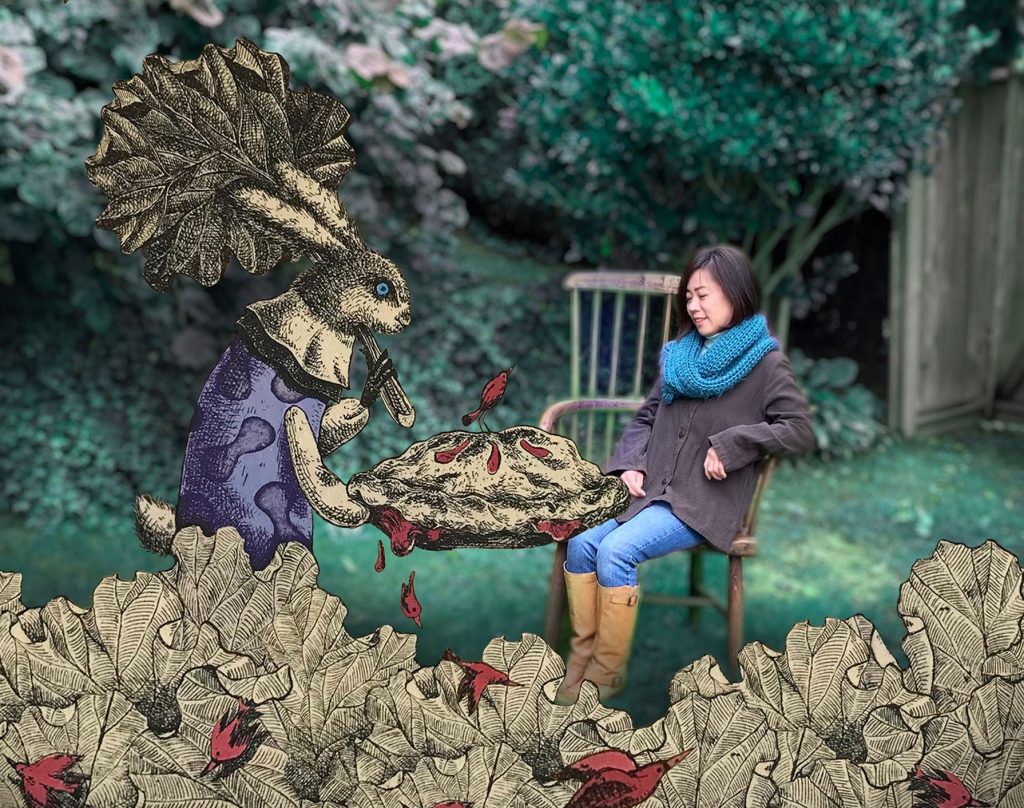
Mariko Ando
Contact details:
Mariko Ando, Vancouver, Canada
Interview by Deborah Blakeley, January, 2024
Images on this page are all rights reserved by Mariko Ando
Think a colleague or friend could benefit from this interview?
Knowledge is one of the biggest assets in any business. So why not forward this on to your friends and colleagues so they too can start taking advantage of the insightful information the artist has given?
Other artists you may be interested in:

